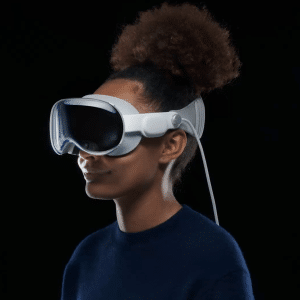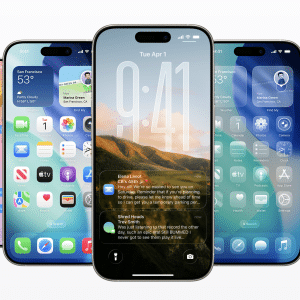Navigating visionOS relies on a handful of precise gestures, designed for comfort and ease. Apple Support outlines the primary actions: to select an item, look at it and tap your thumb and index finger together, mimicking a click on a Mac or tap on an iPhone. For scrolling, pinch your thumb and index finger and flick your wrist up or down, ideal for browsing Safari or Photos. To move windows or apps, pinch and hold, then drag your hand to reposition them in your virtual space. Zooming requires a two-handed gesture: pinch both hands and pull them apart to zoom in or push them together to zoom out, perfect for resizing windows or exploring images.
For direct interaction, you can touch virtual elements like the visionOS keyboard, typing with one finger per hand. To access the Control Center, place your hand palm-in, flip it palm-out when a button appears, and tap again to open settings like Notifications or Mac Virtual Display. Pinch and hold while looking at the status bar, then slide your fingers side-to-side to adjust volume, per Apple Support. These gestures, supported by ARKit’s 3D hand tracking, ensure fluid navigation without strain, as users can keep hands in their lap.

Practical Tips for Smooth Navigation
Apple emphasizes a few best practices to optimize gesture performance. Use the Vision Pro in a well-lit area, as the device’s outward-facing cameras need clear visibility to track hands accurately. Avoid covering hands with long sleeves, gloves, or large jewelry, which can interfere with tracking, and don’t cross your hands, as this confuses the system. If gestures feel off, users can redo the hand setup via Settings > Eyes & Hands > Redo Hand Setup, ensuring precise calibration, according to Apple Support. The device’s R1 chip, dedicated to processing camera and sensor inputs, minimizes lag, making interactions feel instantaneous, per insights.encora.com.
For accessibility, visionOS offers AssistiveTouch, allowing users to customize gestures or use adaptive accessories like joysticks. For example, users can assign a pinch-and-hold gesture to specific actions or navigate with one eye if needed, adjustable in Settings > Accessibility > Interaction, as detailed by Apple Support. This flexibility ensures the Vision Pro is inclusive for users with varying physical abilities.
Video: Apple Inc.
Why It Matters for Users
These gestures transform how you interact with mixed reality. Selecting apps by looking and tapping feels intuitive, letting you open Messages or Photos with minimal effort. Scrolling through long web pages or zooming into detailed 3D models becomes second nature, enhancing productivity and entertainment. The ability to reposition windows in your virtual space—say, placing a video call beside a work app—creates a personalized, immersive workspace. For gamers, developers can craft custom gestures using ARKit, like the heart-shaped gesture in the Happy Beam app, adding playful interactivity, per Apple’s WWDC24 session.
The practical impact? You’re freed from clunky controllers, making the Vision Pro ideal for extended use, whether working, gaming, or watching immersive content. The aluminum frame and high-resolution displays, paired with gesture-based control, deliver a premium experience, though the device’s weight may require breaks, as noted in X posts. Compared to rivals like Meta’s Quest 3, the Vision Pro’s eye-tracking precision and gesture fluidity, backed by the M2 and R1 chips, set a new standard.
Challenges and Considerations
While intuitive, gestures require a learning curve. Some X posts report issues in low-light conditions, as the cameras struggle to track hands, and reclining positions can disrupt functionality. Apple advises keeping the device clean and smudge-free to maintain camera accuracy. Accessibility features mitigate challenges, but custom gestures, while powerful, are limited to Full Space apps due to ARKit restrictions in Shared Space, per Apple’s developer guidelines. Users must also ensure hands remain visible, avoiding desks or blankets that obscure tracking.
Looking Ahead
The Vision Pro’s gesture system, enhanced by visionOS 2’s improved hand tracking, is poised to evolve with future updates, potentially integrating with devices like the Apple Watch for more intricate controls, as speculated on Reddit.

For now, mastering these gestures unlocks a fluid, controller-free experience, redefining how users engage with mixed reality. As visionOS matures, expect even more refined interactions, making the Vision Pro a cornerstone of Apple’s spatial computing vision.











